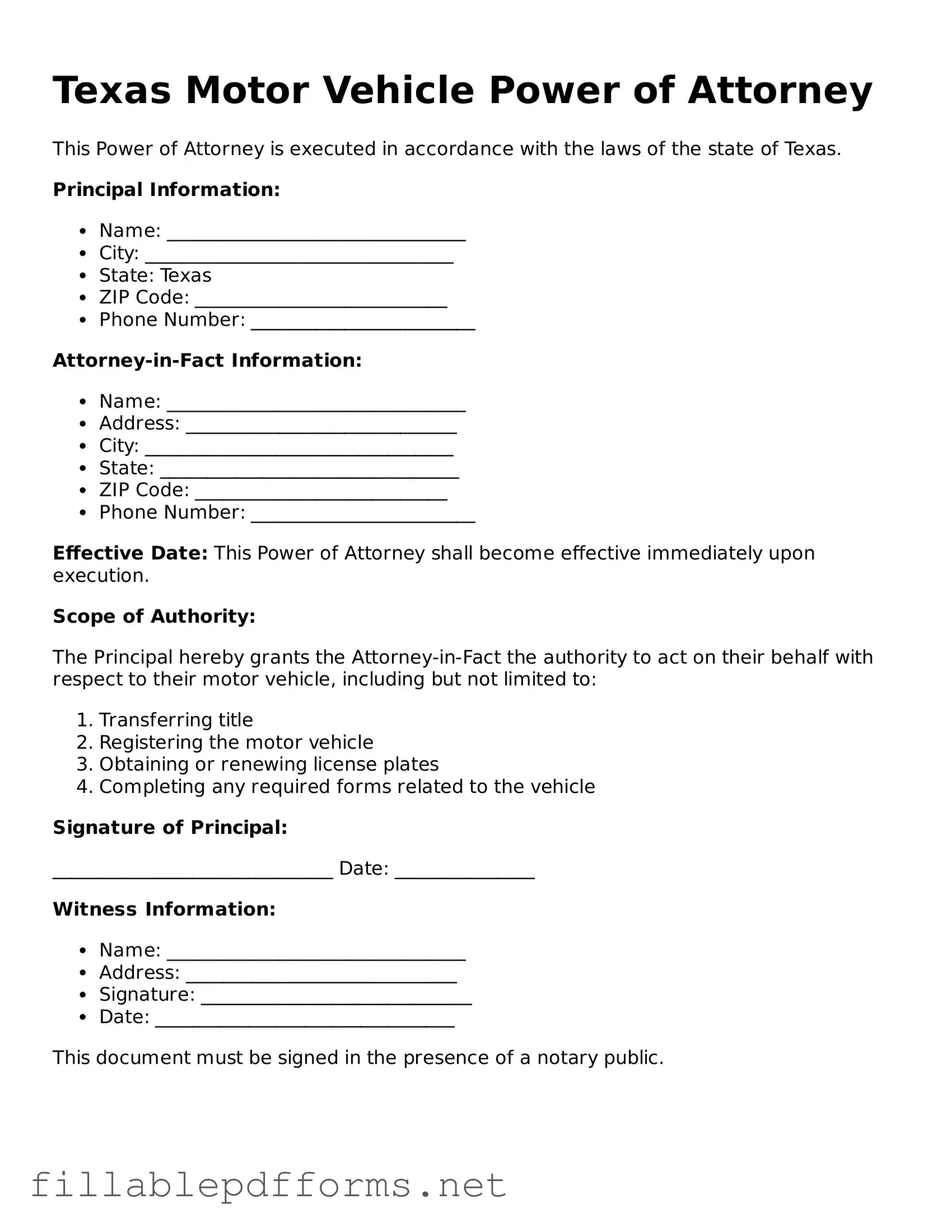Attorney-Verified Motor Vehicle Power of Attorney Form for Texas State
The Texas Motor Vehicle Power of Attorney form allows an individual to designate someone else to act on their behalf in matters related to motor vehicles. This document is essential for those who need assistance with vehicle registration, title transfers, or other related tasks. By using this form, individuals can ensure that their vehicle-related needs are managed efficiently and effectively.
Launch Editor Here
